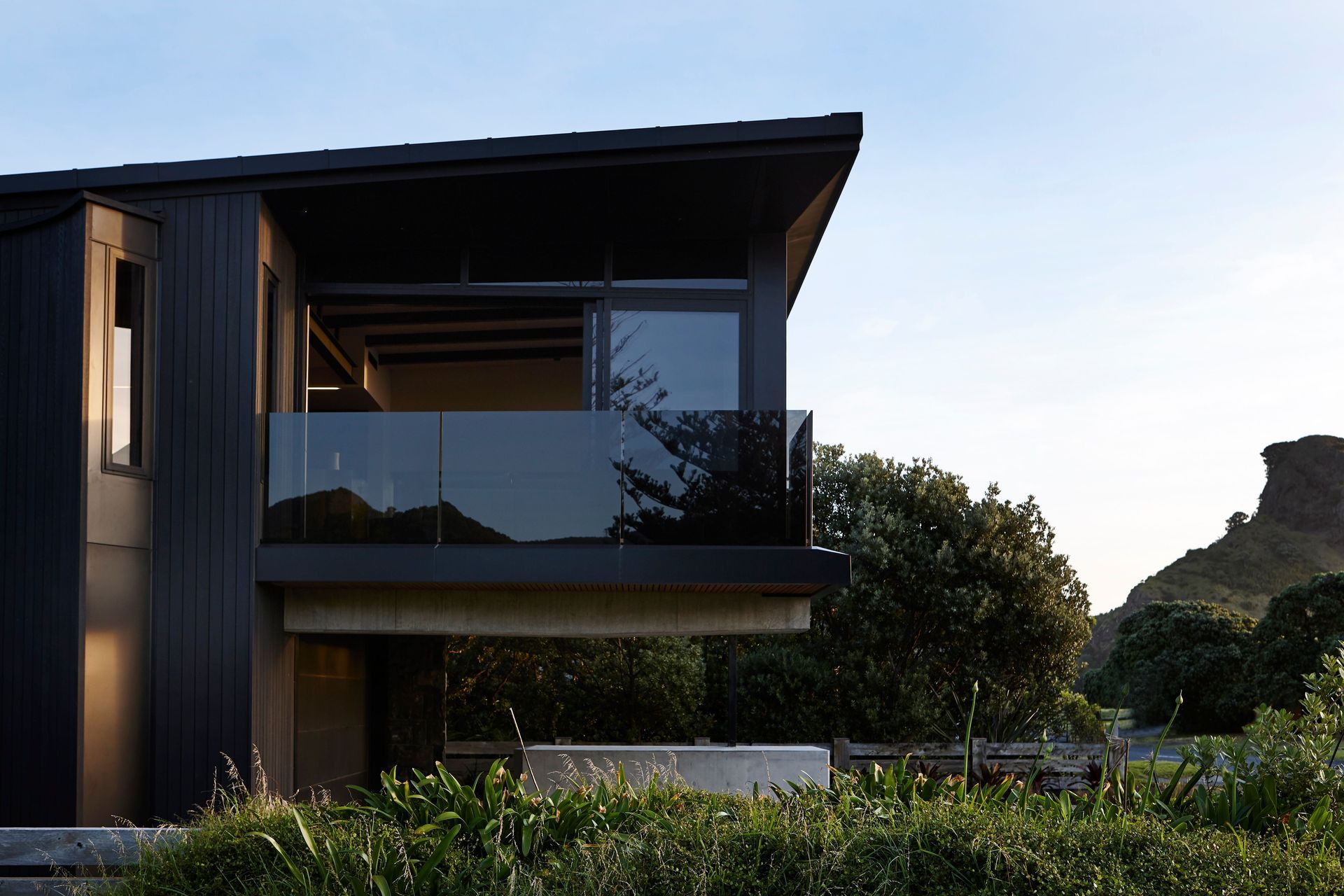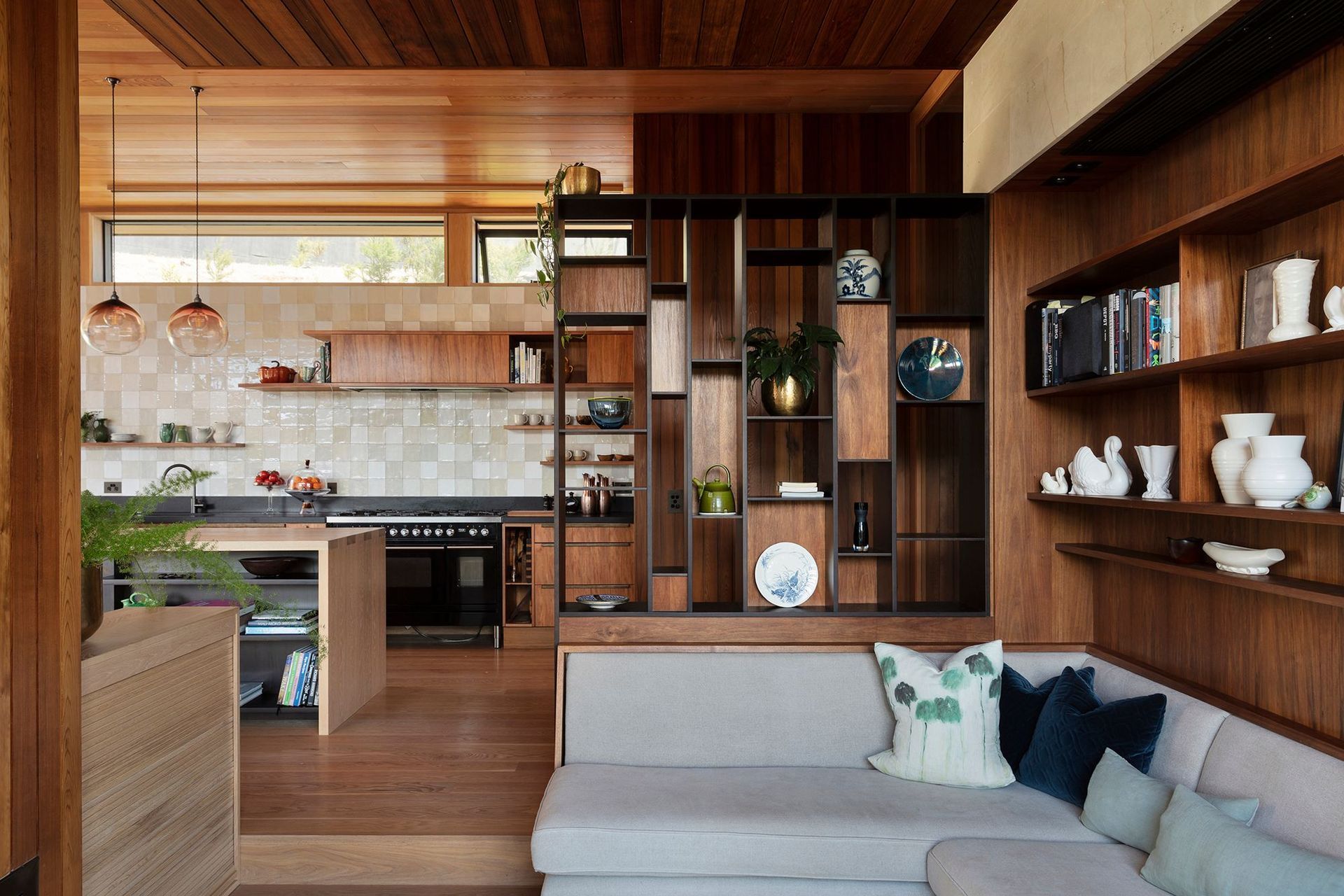Kiwi Modernism: how California Modernism has transformed our homes

California mid-century modernism has had a global impact on design and architecture, but it has also left an indelible mark on the New Zealand landscape that continues to this day.
California mid-century modernism developed from the 1930s through the 1960s as Los Angeles and its surrounding area became an influential centre of design. Although it has its roots in Bauhaus and European and East Coast modernism, California modernism is more organic and naturalistic, with emphasis on open-plan indoor-outdoor living, rectilinear structures typically constructed with steel frames, and lots of glazing. It also reflected a revival of crafts and the use of industrial innovations in the home.
The Case Study Houses are classic examples of the style, along with homes designed by Richard Neutra, Rudolf Schindler, Charles and Ray Eames and John Lautner. “California mid-century modernism is exciting, optimistic and beautiful,” remarks Daniel Marshall from Daniel Marshall Architects. “And there was also such a range of outcomes, from the wildly experimental expression of Albert Frey, to the hyper-rational Pierre Koenig case study houses and, then, the refined elegance of Craig Ellwood’s houses.”
Modernism's post-war influence on New Zealand
“After the Second World War, New Zealand’s built environment was influenced by European modernism, partly because of the hugely talented European emigré architects, such as Ernest Plischke, who settled here,” explains Daniel. “But, culturally, New Zealand has always looked to California for influence and that has had an enormous influence on our residential dwellings.”
California Modernism resonates in the way we live in New Zealand. “We are naturally ‘outdoorsy’ people, so we place great emphasis on the way our houses sit within, and connect to, the surrounding landscape," says Tobin Smith of Colab Architecture. “But we are not generally ostentatious and, therefore, the simple forms of the California modernist style sit well with us.”

How California Modernism began?
“The genesis for this movement would be the climate and landscape of Southern California, the post-war cultural optimism of the time and place, and the enthusiasm for adopting the use of industrial materials and processes that were developed during World War Two,” says Daniel. “This helped to alter the way that we understood the aesthetics of the home. Remember that California was the site of the largest military-industrial complex in the US during the war, and designers saw the beauty of the industrial, whether it was complex plywood moulding in the creation of aircraft, or the practicality and beauty of large-span steel structures.”
“However, post-war New Zealand, we didn't have access to the huge industrial complex that the Americans had, so the expression was more subdued,” he adds. “Instead, our architects were detailing timber in the same way as the American architects used steel.”
There was also a dramatic evolution in the way people planned and configured ‘the typical house’, suggests Tobin. “The movement saw older, compartmentalised dwelling typologies cast aside in favour of more flexible, open-plan internal spaces that had strong connections with their surroundings through their orientation and generous glazing.”
Reflecting our love for the great outdoors
“This period of architecture is timeless,” suggests architectural designer Nic Curragh of Objects. “It advanced the transparency and layout of our homes because California was all about getting outside and blurring those threshold boundaries – and we are the same in New Zealand; living life outdoors is just part of our culture.”
There are hundreds of New Zealand homes that have been heavily influenced by California Modernism while possessing their own Kiwi flavour. Ron Sang's Brake House in Titirangi – with its simple yet elegant forms set within a canopy of bush – was designed more than 40 years ago, but still sits at the forefront of contemporary architecture in New Zealand. Other well-known modernist architects working in New Zealand who have stood the test of time include Ernst Plischeke, Vernon Brown, Group Architects, Claude Megson, Tibor Donner and Bill Alington.
“I think some of the bravest early expressions of modernism were seen in our beach houses – and the bravest of these was the Maunsell Beach House in Riversdale, designed by architect Derek Wilson and built in 1956,” suggests Daniel. Its simple angular form and 'indoor–outdoor flow' can still be seen to have inspired some of our leading architect-designed houses built today.
New Kiwi Modernism
Very recent homes that have been influenced by California Modernism include The Knoll, Takapuna House, Red Rock House and Forest Pavilion, which architectural designer Chris Tate describes as a piece of California Modernism in the forest. It pays homage to the work of Austrian-American architect Richard Neutra, whose homes in California often had structures that extended out with ‘an arm’, large overhangs that extended beyond the roofline, and clean fascia edges around the building. “I love clean, machined edges in a very undulating, rugged forest. It works really well with our climate,” Chris says.
Today, in keeping with our love of the great outdoors, Kiwi Modernist homes are continuing to push the boundaries of where a house starts and ends. Being able to easily open up the home to the outside is now being enhanced by the technological advances that have been made in the products that are now available.
High-performance glazing prevent loss of heat from the home while providing transparency, while sliding doors that fill up entire walls have near-invisible tracking systems and fine-profiled frames, creating a seamless flow between the inside and outside spaces.
There have also been advancements in direct and energy-efficient outdoor heating, along with new materials that don’t deteriorate in the harsh New Zealand sun, wind and rain, which are helping to extend the number of months that we can comfortably spend outdoors. Today, Kiwi modernist homes are able to completely transform themselves and, so, the surrounding landscape becomes more important than ever.
Words by Justine Harvey.
Photography by Simon Devitt (1), Jackie Meiring (2), Sam Hartnett (3) and Sarah Rowlands (4).
Further reading: A history of modernism in New Zealand has been detailed in books such as Long Live the Modern: New Zealand's New Architecture, 1904–84, by Julia Gatley and Modern: New Zealand Homes from 1938 to 1977 by Jeremy Hansen.


